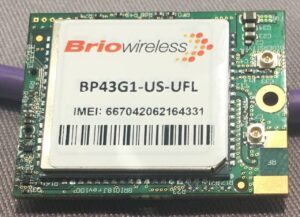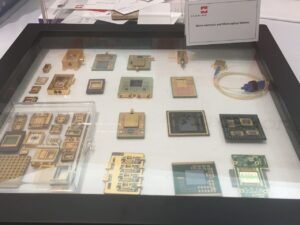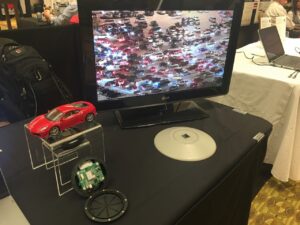Yesterday, ST held its last Technology Tour for 2017 in Toronto, Ontario (Canada), and the energy was electric. In certain ways, the event mirrored last month’s ST Developers Conference that put the spotlight on SensorTile and its IoT (Internet of Things) initiatives. The day was filled with engaging and practical presentations that focused on smart technologies, cloud connectivity, power management, IoT security, and motor control, to name a few major topics. There were also hands-on training and demos showcasing key ST products like its function packs and development boards.
Hence, this was a chance to bring first-hand knowledge and experience to enthusiasts, engineers, startups, and multinational corporations. However, there was something truly unique and special about this event, because it also became a platform to shine a light on the local community and show why one of the hottest regions in the world for IoT developments has such a close relationship with ST.
Technology Tour 2017: Canada Loves ST

What was genuinely fascinating at the event wasn’t that Canadian companies had booths on the show floor, it was how they were using ST solutions in so many aspects of their activities. For instance, Brioconcept, located in Laval, Quebec, will work with their clients to design, test, certify and bring a device to production. As they explained to us, this very often means prioritizing ST components, such as its microcontrollers, motor controls, and many others, to build products quickly and efficiently.
In one of the stories they shared, they explained that using a Nucleo board for a proof-of-concept reduced development times from 10 days to just one! On the other hand, Briowireless, Brioconcept’s sister company, was showcasing a cellular module that relied on an STM32L0. Aimed at IoT applications, the modem is flexible, allowing for different protocols (3G, 4G, etc.) without incurring massive design changes, and it is already certified by regulatory authorities so engineers can jump into a project with a much greater peace of mind.

Similarly, Sanmina was another Canadian design house on the show floor. With production capabilities in 19 countries and a clean room in Ottawa, it focuses primarily on specific and professional applications, as well as high-speed communication terminals. Very often, clients will ask Sanmina to produce a device that includes ST parts, but the company also designs optical, RF, storage, and microwave components according to its customers feature requests. When that happens, they often rely on IC from ST to build custom components that turn their client’s vision into viable products.
Technology Tour 2017: ST Loves Canada
This last Technology Tour for 2017 also served to highlight how vibrant and innovative the IoT scene is in Canada. This is why ST made a point to put forward certain of its partners that could offer services to the many Canadian companies looking to launch IoT projects. For instance, SecureRF provides a public-key authentication framework that is resistant to breaking efforts made possible by quantum computing, while being so optimized it can run on an STM32 and even an 8-bit STM8 microcontroller. Hence, thanks to an active collaboration between ST and SecureRF, engineers using STM components benefit from one of the most future-proof cryptographic algorithms in the industry.
Similarly, many attendees interacted with 7layers, a company that handles all testing, antenna tuning, and RF optimizations for IoT devices using Bluetooth and major sub-gigahertz networks like LoRa, or Sigfox, among others. They will also initiate certification procedures in all the major regions of the world (USA, Canada, Europe, China, etc.), so companies can just focus on commercializing their products instead of fearing delays and costly hurdles.
From the Engineering Teams to Business Operations

This Technology Tour was a great learning experience because ST offered attendees the chance to interact with important companies that are using its platform on a massive scale. For instance, PNI is a provider of smart parking solutions, with installations and pilot programs in numerous US and Canadian cities as well as many other countries around the world. Their pod uses their own magnetometer alongside an STM32L0, a LoRa module, and a Bluetooth Low Energy solution for over-the-air updates. Amazingly, the resulting low-power device is capable of running for seven years on a single battery, and it’s powerful enough to include advanced algorithms capable of rejecting permanent and temporary interferences, such as a shopping cart rolling over a parking spot.
Finally, the highlight of the day was the closing keynote by Scott Kennedy, principal consultant on IoT for Rogers, a major Canadian telecommunication operator. He offered a different perspective by focusing on the strategies involved in entering and thriving in this market. After a day of technical sessions, engineering presentations, and deep interactions, this talk focused on the business considerations companies and visionaries must deal with to be successful and disruptive. Ultimately, when the last Technology Tour of 2017 came to a close yesterday evening, the audience was not just energized, as it had been all day, but it was also inspired.
